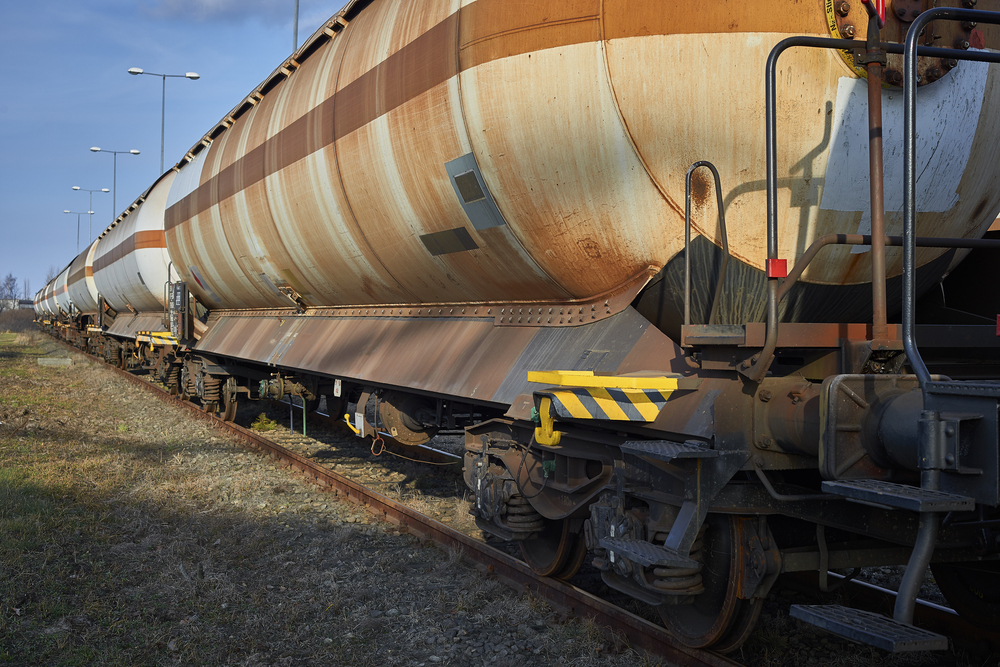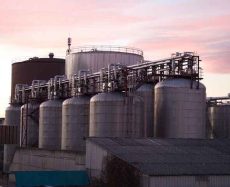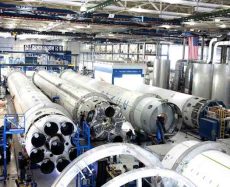
- admin
- August 13, 2019
A Comprehensive Buyer’s Guide on Sulfuric Acid Tanks
In high-end industries, agricultural sectors and manufacturing units, dealing with gasoline, diesel, petrol, and oil is a common thing. But what if it is sulfuric acid?
If you are a manufacturer of this highly corrosive chemical, then you must find appropriate storage solutions to keep it safe.
The hazardous chemical comes with huge risks and mishandling it can cause catastrophic damages to your manpower and the environment.
The biggest risk the colorless and viscous liquid imposes is that when it comes in contact with water it can react strongly and explode.
Hence, proper storing units will help you save thousands of bucks as well as increase the safety of your work-space.
While investing in appropriate industrial storage tanks for sulfuric acid, you need to consider factors like chemical compatibility, molecular weight, construction materials, and secondary containment.
It is because the chemical being an aggressive oxidizer defies the robustness, mechanical integrity, and design of many storage tanks.
Sulfuric Acid Tanks: Best Options to Consider for Industrial Storage Purposes
Choosing the best sulfuric acid tanks available in the market can be an intimidating task if you are doing it for the first time or lack proper knowledge about them.
However, steel tanks, fiberglass tanks, and polyethylene tanks are very much in demand.
Steel tanks are popular choices in manufacturing units and industrial sectors. They are good for storing 98% sulfuric acid because they do not degrade, become brittle, or show signs of cracking.
Modern units feature an internal coating and rotationally molded polyethylene lining system that shields the tanks against the severest chemicals and their potential hazards.
The steel tanks are known for their extensive chemical resistance, sturdiness, and durability that are ideal for storing the chemicals. Stainless steel, carbon steel, and nickel alloy steel tanks are excellent for storing the combustible liquid.
Fiberglass tanks are also a good option for sulfuric acid manufacturers. They are equipped with several internal coatings and a structured layer that consists of resin and sliced glass fiber.
Fiberglass storages are ideal for keeping sulfuric acid having concentration of 93-98%, 80 to 92%, and 80%.
Polyethylene storage tanks are excellent choices for storing the corrosive and combustible liquid. They are engineered to perfection for dangerous applications.
The high-density, double-walled, cross-linked polyethylene is a thermostat resin that can easily deal with the chemical.
Sulfuric acid storage tank design: Size, features and molecular bonding for strength
Size:
If you are looking for smaller storage tanks, you can use those units having a size of 4,000 gallons. If you require larger storage, splitting the liquid into multiple smaller tanks is highly recommended.
It is because larger tanks are difficult to handle and can lead to wastage of the liquid. But, if you feel confident to deal with larger units, a tank having a size of 12,000-gallons is suggested.
Features:
Since the chemical is heavy and can burn the skin by producing a toxic gas, you should consider a safe storage tank that is known for its strength and durability.
A tank with a secondary containment integrated into it can prevent accidental spilling or leaking of the liquid outside the system and avoid its direct contact with people or water.
Vessels with secondary containment can endure the inherent weight of the chemical and the static load pressure it produces at the bottom third of the tank.
You can also look for those tanks that are equipped with concrete or brick bund walls to prevent overfilling or leakage of the chemical.
Molecular Bonding for Strength:
Molecular bonding in storage tanks is another thing to look for in tank design.
Sulfuric acid tanks designed with thick tank wall and solid molecular bonding provides the much-needed structural reinforcement for durability.
Sulfuric acid tank long-term cleaning and maintenance: Valuable guidelines to follow
For maximizing lifespan and detecting abnormalities, it is important to undertake appropriate cleaning procedures. Here are some valuable tips to follow.
• Clean the tank annually with two parts of ammonia solution and three parts of distilled water. The solution will help you to neutralize the pH of the acid.
• Spray the interiors
• Allow the solution to soak. It will take two hours for the solution to get absorbed completely.
• Test the pH of the tank containing the chemical. Rub a piece of litmus paper on the side of the tank that will turn blue when coming in contact with acid and will turn red when coming in contact with a base. Repeat the 2nd and 3rd steps until the litmus paper starts to react.
• Allow the tank to dry by leaving it in the open air after draining the excess solution.
• An annual inspection will help you to spot defects in the storage tank, prolong its longevity and save thousands of dollars every year on its maintenance.
Get in touch with the professional having camera, specialized equipment, expertise and knowledge to detect the exact condition of the tank.
Sulfuric Acid Storage and Handling: Things to remember while dealing with it
• Sulfuric acid storage tanks must be stored in a cool and dry place and away from the direct exposure of sunlight and other heat sources.
• For ensuring the safety of this highly-corrosive liquid, the tanks must be stored at a high elevation to take advantage of gravity feed to process.
The above-ground storage tanks are good options for industries and manufacturing units.
• The vessel requirements of sulfuric acids differ depending on its concentration.
Highly concentrated sulfuric acid must be stored in a carbon steel tank having a dimension of 2.2 specific gravity wall thickness.
• While handling the liquid in a strong industrial tank, make sure it does not come in contact with water, metal, and skin.
When it comes in contact with metals, it produces highly flammable hydrogen gas.
When it is spilled in water, it will start exploding by creating a poisonous sulfuric acid aerosol fume.
When the chemical gets in contact with the skin, it causes it to burn. If it is highly concentrated, then it can be more serious than burns.
Sulfuric acid tank material: Find out which one is ideal for you?
While choosing storage tanks for sulfuric acid, you must do extensive online research and get acquainted with the different units.
Most companies and manufacturers prefer carbon steel tanks for storing this hazardous chemical.
Carbon steel tanks are fantastic choices since they are relatively inexpensive and offer resilience to corrosion.
You can also consider stainless steel storage or nickel alloy tanks that provide resistance to non-oxidizing chemicals like sulfuric acid.
There is no point in buying inferior sulfuric acid storage tanks that starts to crack and shows signs of deterioration within a few weeks of buying.
Therefore, choose the right tanks for storing hazardous sulfuric acid by following the guidelines mentioned above.
- Industrial tanks
- Storage tanks
- sulfuric acid tanks
Category
- Above Ground Fuel Tanks
- Above Ground Gas Storage Tank
- Above Ground Storage Tanks
- Above Ground Water Storage Tanks
- Agricultural Tanks
- Chemical storage Tanks
- Diesel Fuel Storage Tanks
- Diesel Storage Tanks
- Exernal FloatingRoof Tanks
- Farm Water Tank
- Fiberglass Oil Tanks
- Fiberglass Septic Tanks
- Fiberglass Underground Fuel Storage Tanks
- Field Erected Tanks
- Floating Roof Tank
- Fuel tank
- Industrial Chemical Storage Tanks
- Industrial Gas Tanks
- Industrial Plastic Tanks
- Industrial Storage Tanks
- Industrial Tank heating pads
- industrial tanks
- Natural gas
- Natural gas vs Propane
- oil storage tank
- Oil Storage Tanks
- Peracitic Acid
- Petroleum Tanks
- Residential gasoline storage tanks
- Residential Water Storage Tanks
- Sodium Hydroxide Storage Requirements
- Sodium Hypochlorite Storage Tanks
- Steel Storage Tanks
- storage tank failure prevention
- Storage Tanks
- Sulfuric Acid Tanks
- Uncategorized
- UnderGround Storage Tanks
- Water Storage Tanks

 Tank Size Calculator
Tank Size Calculator






